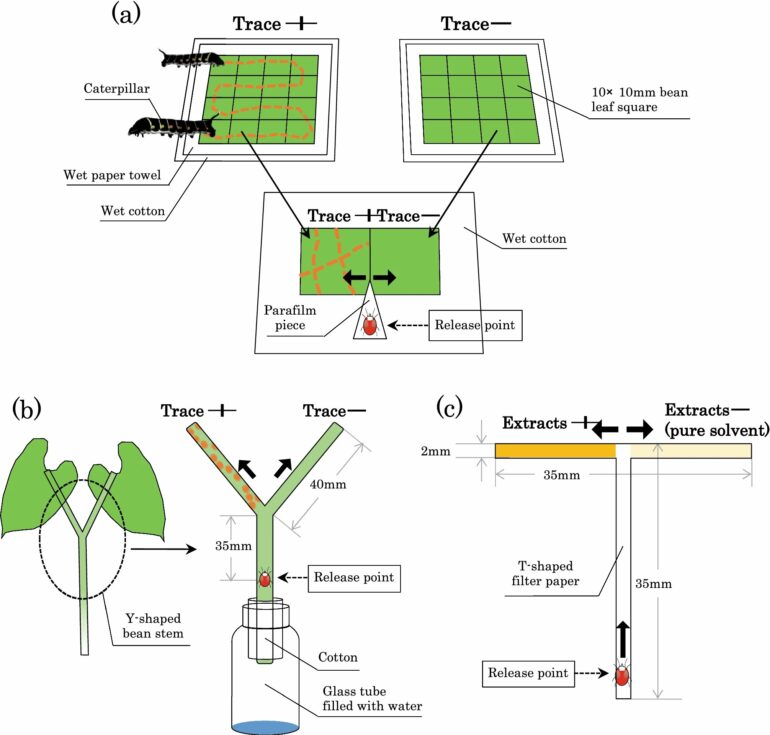Competition for resources is everywhere in nature. It is a much riskier life for an animal whose competitor is hundreds’ of times larger than itself. Tiny herbivorous pests such as spider mites are no strangers to this fate.
Caterpillars consume the same vegetation as the mites, possibly suppressing these common pests’ activity in their shared ecosystem. In previous studies, mites were found to avoid tracks left by carnivorous ants, but what could be behind the avoidance of herbivorous caterpillars?
Now, a team of researchers at Kyoto University has discovered that spider mites avoid chemicals extracted from caterpillar traces; the repellent effect lasts for days.
“Spider mites, which are less than 0.5 mm long, lose not only their lives but also their offspring and everything else when they encounter voracious leaf-eating caterpillars,” says lead author Shiori Kinto of KyotoU’s Graduate School of Agriculture.
Both mite species Tetranychus kanzawai and Tetranychus urticae construct protective webs on host plant leaf surfaces and usually live underneath these. Butterfly and moth caterpillars then indiscriminately consume spider mite-infested and intact leaves along with dormant individuals or their eggs.
“As hypothesized, however, female adults of T kanzawai and Turticae avoided food plant leaves with traces of silkworm species,” adds Kinto.
Spider mites are, of course, not hunted by other herbivores, but tiny herbivores are sometimes consumed together with the food plants by much larger herbivores using similar resources. This accidental consumption is known as intraguild predation, or IGP. Little research has been reported on incidental IGP caused by herbivores and their defensive strategies against it, in contrast to numerous studies on IGP between predators.
Conducting dual-choice experiments, Kinto’s team observed that T kanzawai avoided acetone extracts of domestic silkworm Bombyx mori traces applied to a T-shaped filter paper pathway. This finding demonstrated a repellent effect of herbivore trace chemicals on different herbivorous species.
“If we can identify this substance, we may be able to realize a spider mite repellent that is derived from a natural substance, safer for humans, and effective for longer periods,” adds team leader Shuichi Yano, hinting at a possible application in agriculture.
The findings are published in the journal Scientific Reports.
More information:
Shiori Kinto et al, Spider mites avoid caterpillar traces to prevent intraguild predation, Scientific Reports (2023). DOI: 10.1038/s41598-023-28861-0
Citation:
Study: Caterpillar traces repel spider mites and may help agriculture (2023, May 1)



